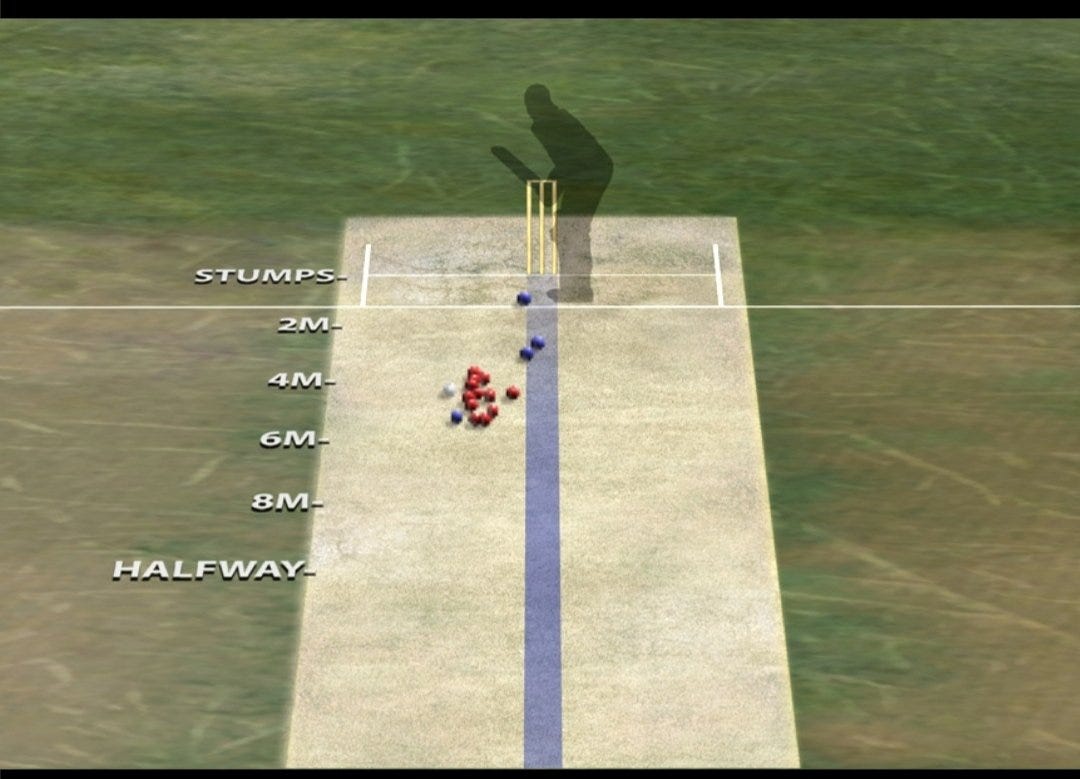Since the beginning of 2011, the visiting team has batted first 23 times in India. This effort in Chennai is only the third time that they have made in excess of 500, after West Indies in the 2011 Mumbai Test and England at Rajkot on their last tour. In both those matches, India managed a draw (although they almost won in 2011) on the back of a solid reply in their 1st innings - 482 and 488 respectively. The batsmen contributed and Ashwin scored 103 and 70.
For anyone wondering why Washington Sundar is the XI instead of Kuldeep Yadav - that’s your answer. India knows that they need to bat deep on pitches like these and even lower-order runs are crucial. There have been 4 other occasions where visitors have 400 or more batting first since 2011 and in 3 of them - one Indian batsman batting at #8 or below has scored 50 or more. It is an important reason why India has managed to win 3 of these 6 games and drawn the rest. It’s not a coincidence that India’s W/L ratio (in this timeframe) at home is even better when they lose the toss than overall.
And thus most Indian fans believed that they would make 400, avoid the follow on and save the test at the very least. England though came with probably their best pace attack to India with James Anderson (successful in 2012), the reliable and quick Jofra Archer, and Ben Stokes who is a very solid 5th bowler. (Stuart Broad with his quality leg cutter didn’t even make the XI but surely he will get a game at some point.) Yes, Archer is on his 1st tour to India for England, but most followers felt comfortable in saying he would do better than Chris Woakes did in 2016.
It was really going to come down to how well Jack Leach and Dom Bess would fair against the Indian batsmen who play spin quite well, as the stats below would suggest. Everyone in the Indian line-up with the exception of Ajinkya Rahane averages higher against spin compared to pace.
Average v/s spin in test since 2016 (excluding 3 ongoing tests)
Courtesy - Himanish Ganjoo
Malcolm Gladwell in his book, Outliers, wrote how Basketball is a sport where the strongest players often determine the strength of the team. He called it a “strong-link sport” while soccer was termed a '“weak-link sport” where the depth of squad matters more. In that sense, while T20s can often be won by a one-off performance winning in tests requires depth and it is a “weak-link sport” and the English spinners, in this case, needed to be accurate to challenge India.
During the 2nd session on Day 3, Dom Bess did much better than just being accurate. He bowled a very good line, flighted the ball beautifully, and didn’t give any freebies to either Pujara and Kohli. England had clear plans with 4 fielders on the leg-side to restrict (for Pujara) any easy runs. Jofra Archer was bowling beautifully from the other end as England conceded only 11 runs in the first 10 overs after lunch.
Pitch Map - Dom Bess to Virat Kohli
Courtesy - BCCI.TV
Then Bess beat Kohli with one turning sharply and had him edge one to short leg. It reminded me of Kohli’s dismissal to Moeen Ali in Southampton in 2018 except how much this ball spun. By the time he had the better of Rahane, who was looking to take the pitch out of the equation, Bess had figures of 5-1-6-2 post the lunch break. Many argued it was his best spell in test cricket and it’s honestly hard to disagree.
The duo who came together in Sydney and Brisbane were brought together again and played pretty much how they played in Australia. Pujara didn’t play too many expansive strokes unless the English bowlers gave him width and Pant didn’t care about the field. If one was in his zone or had the width, he was going to take his chances. While both of them batted well, it clearly was Bess’s day as a pull from Pujara took the shoulder of short leg and jumped to midwicket for an easy catch.

After the dismissal of Rishabh Pant, Bess did bowl some lose deliveries but that was well after his first 15 overs, and the damage was already done. England still led by more than 350 at that point and had all the options on the table. They could enforce the follow-on or just bat again to force India to bat last. Many experts feel they may not enforce the follow-on, but the key will be to dismiss India within the 1st session tomorrow.
Dom Bess to Indian batsmen (until 67 overs of India’s innings)
Courtesy - BCCI.TV
However it goes from here, it’s clear Bess has won the 1st encounter with 7 more to go in this series. How the Indians play him and if Jack Leach can find his length and support Bess will continue to define the series.






